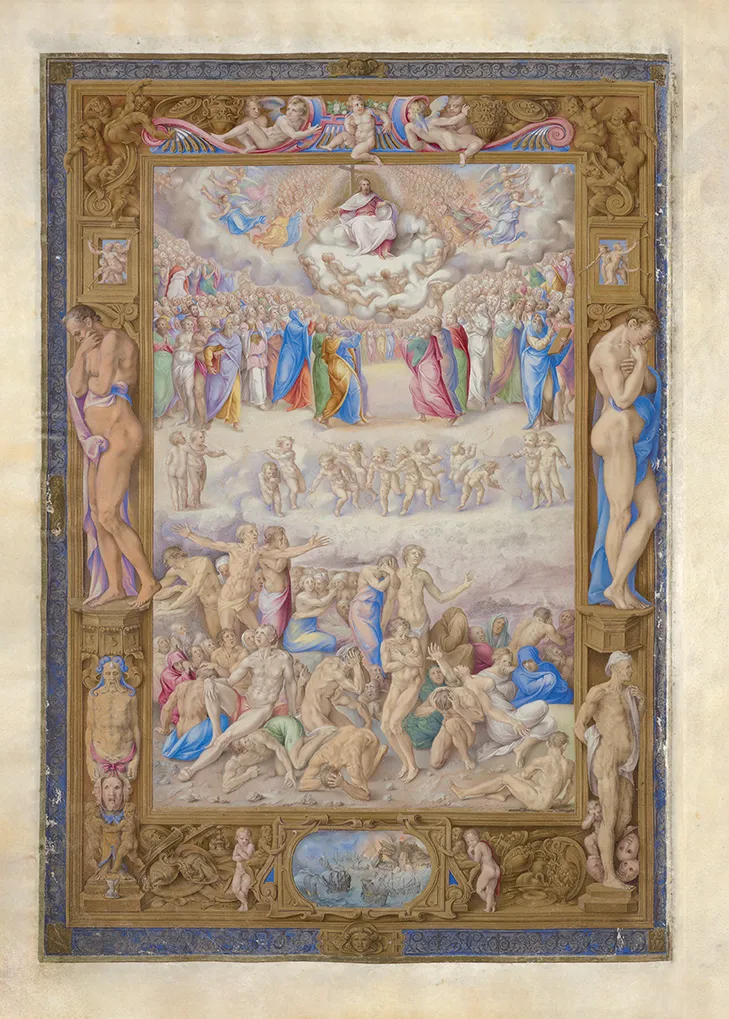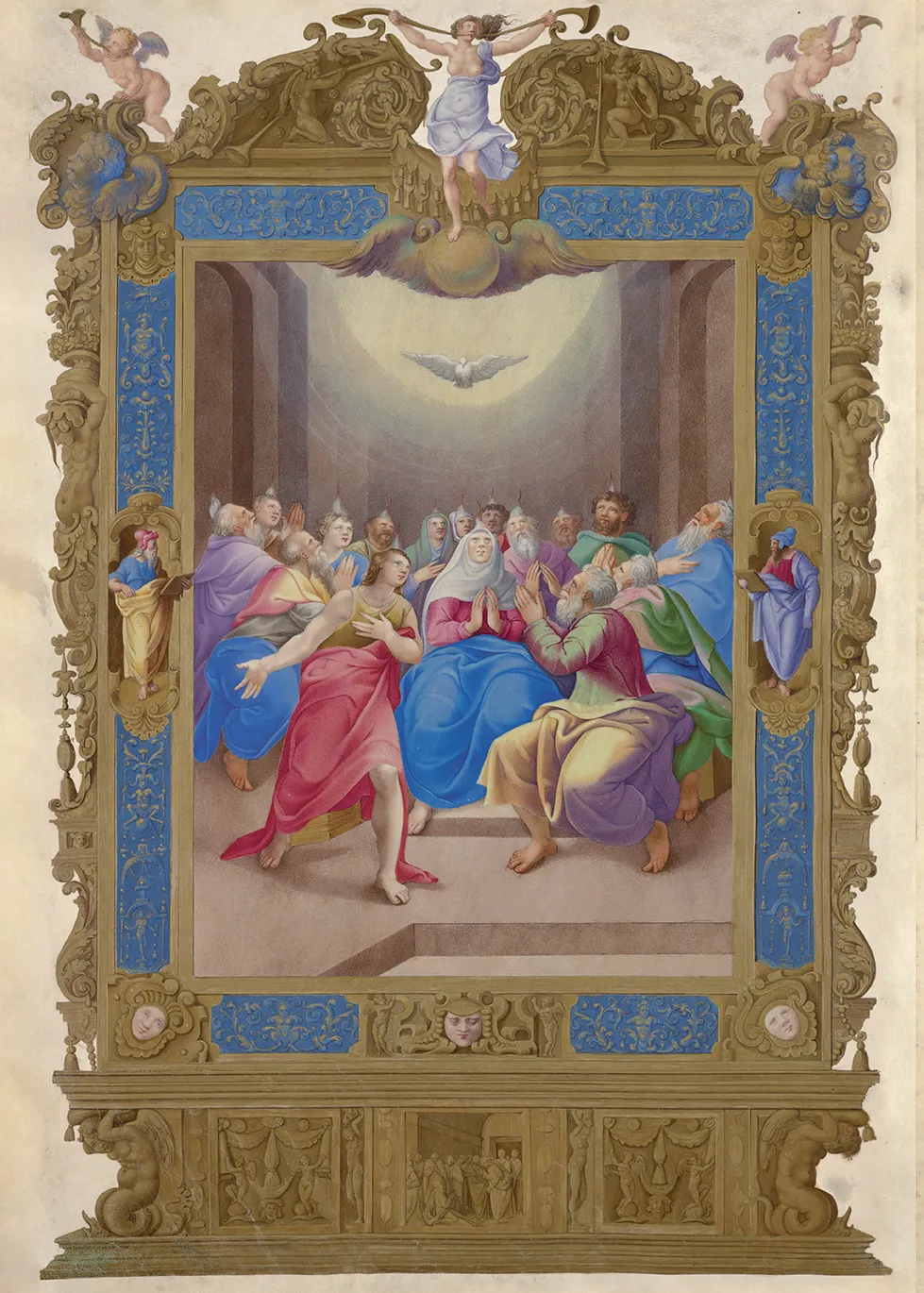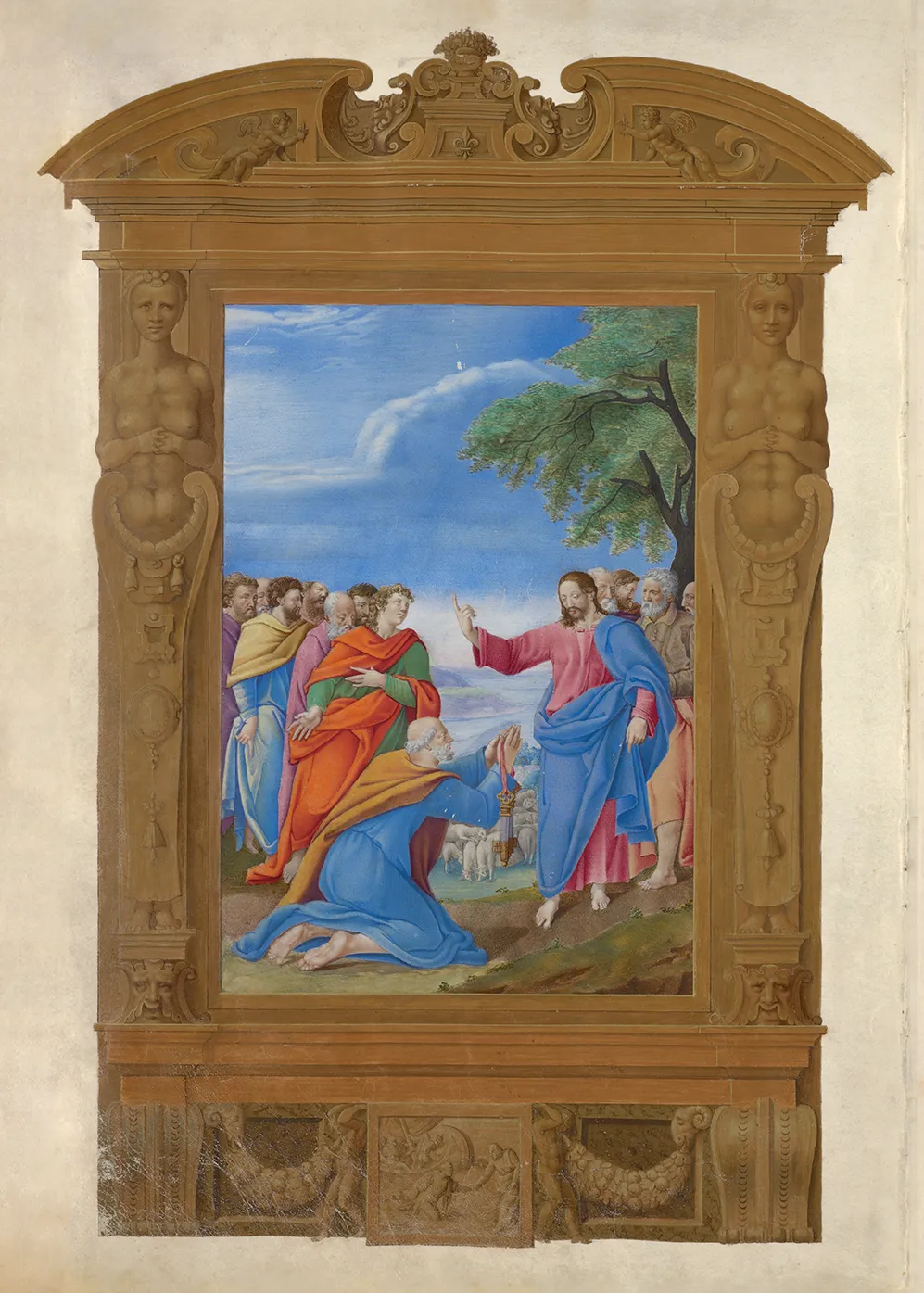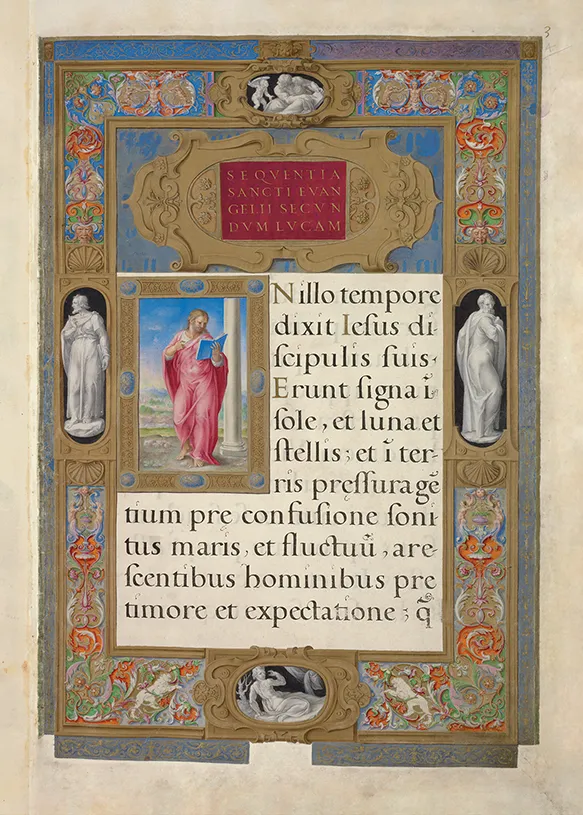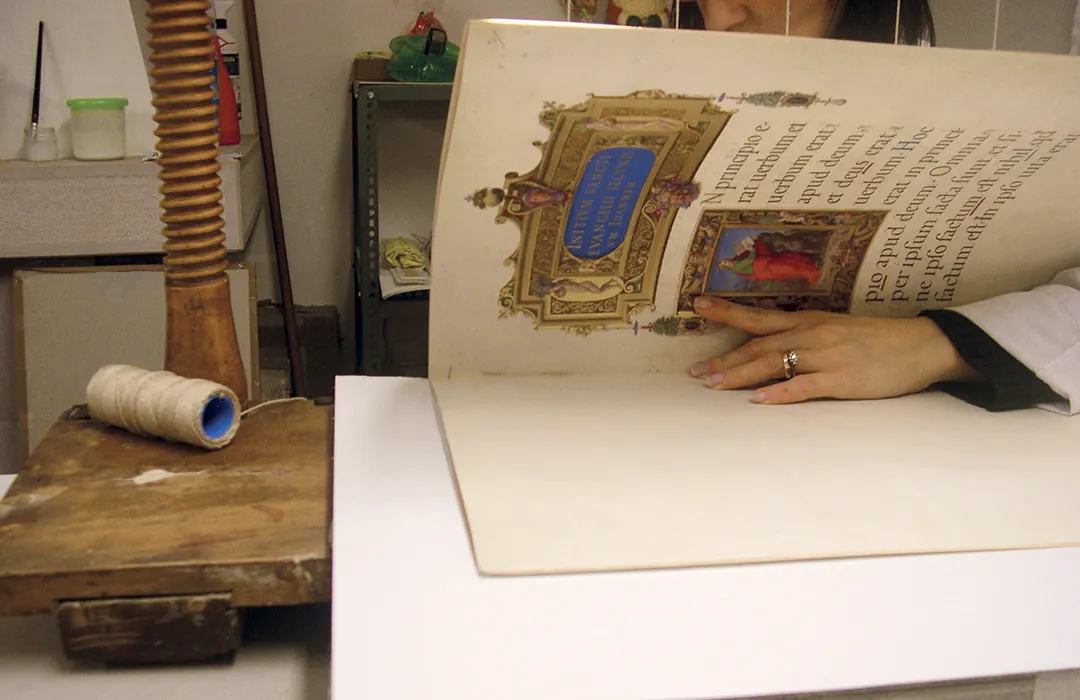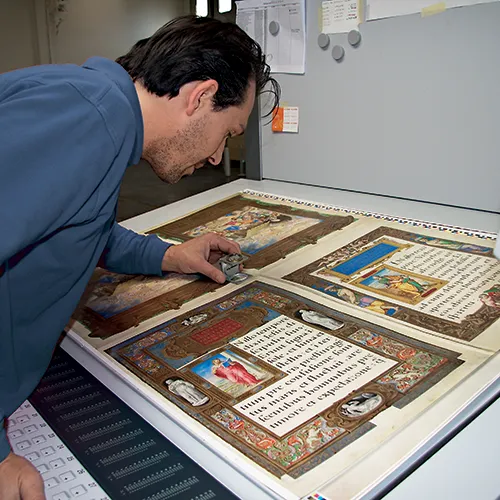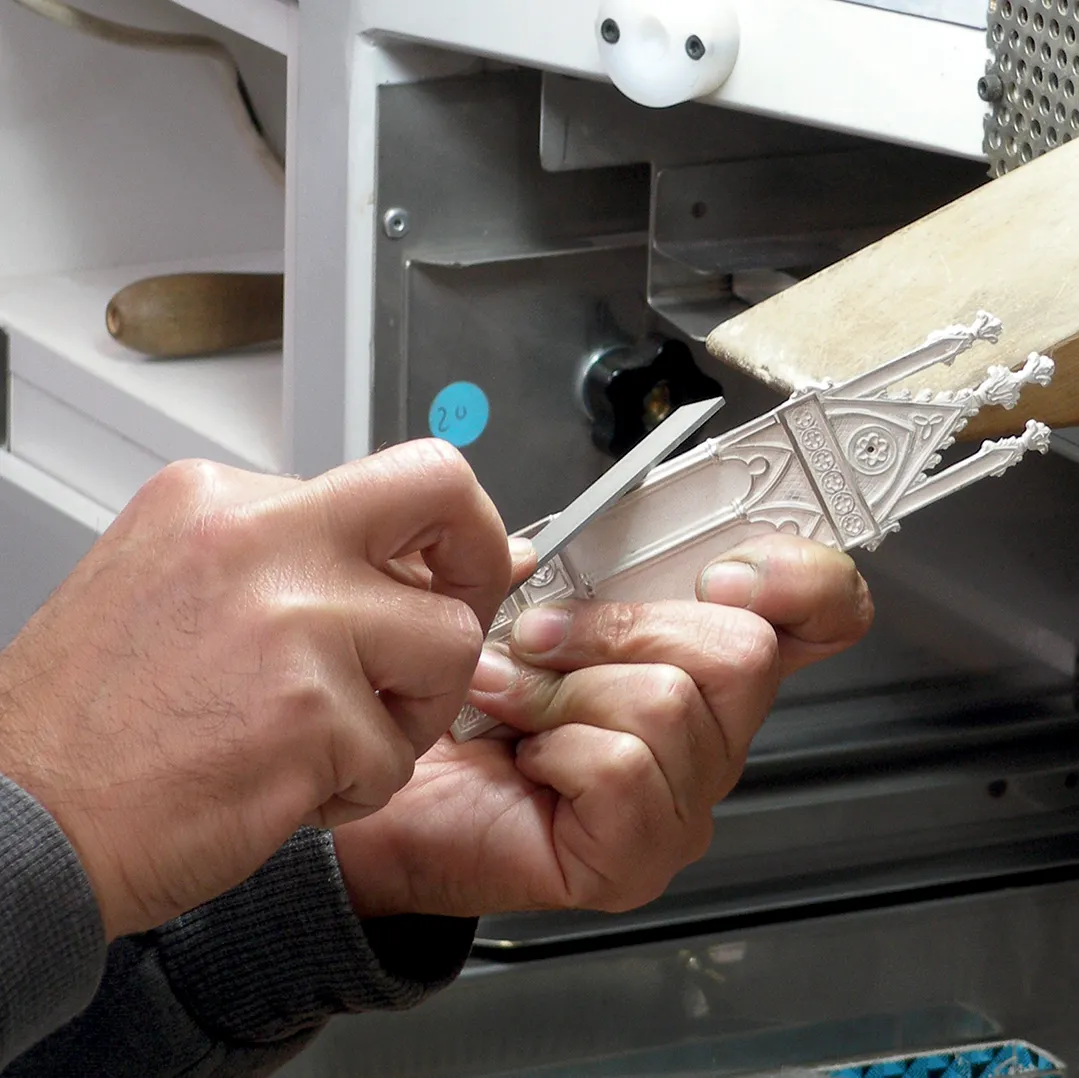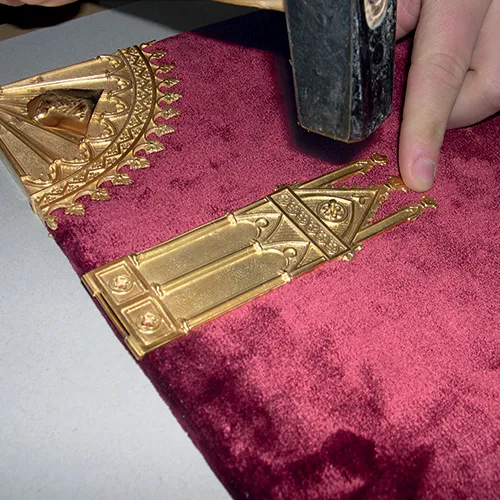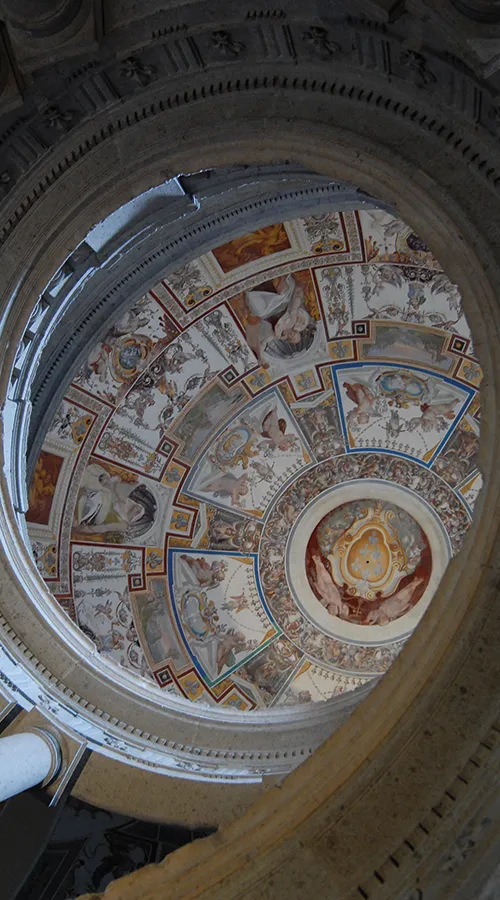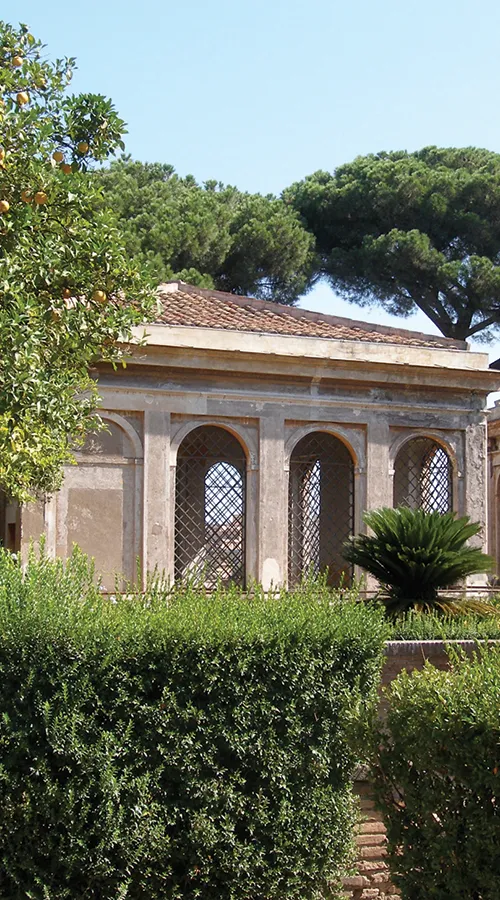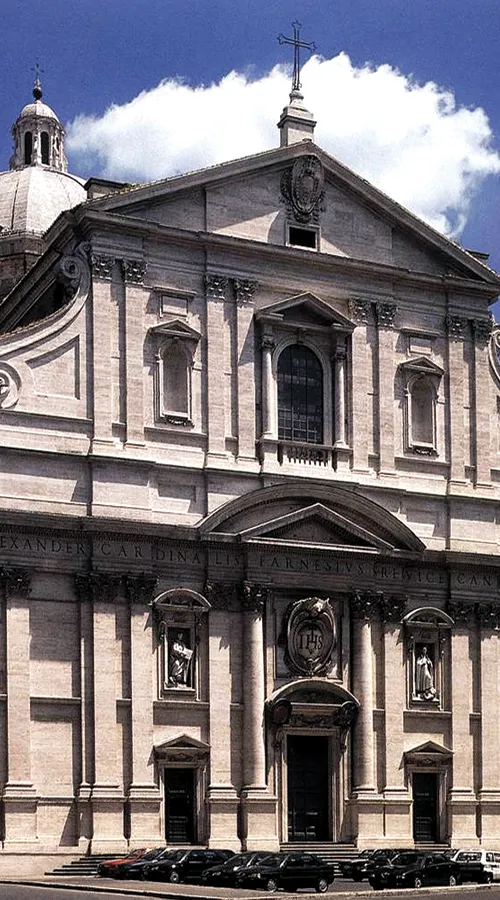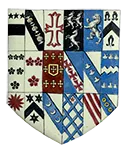
“Tanto bello, anzi ammirabile e stupendo, che io mi confondo a pensarlo, e tengo per fermo che non si possa, non dico fare, ma vedere, né imaginarsi, per minio, cosa più bella”
Per oltre due secoli nella Cappella Sistina in Vaticano fu custodito un libro così prezioso da rivaleggiare, a detta dei contemporanei, con i superbi affreschi delle pareti: il Lezionario Farnese, utilizzato dai Cardinali per le celebrazioni più solenni in Cappella Sistina fino alla fine del Settecento.
A commissionare il manoscritto fu, a metà del Cinquecento, Alessandro Farnese, cardinale e nipote di Papa Paolo III. L’opera doveva essere degna di quel Giudizio Universale appena terminato da Michelangelo e già ammiratissimo, per questo la sua realizzazione fu affidata al più grande e celebrato miniatore del XVI secolo, il pittore Giulio Clovio, che realizzò una magistrale serie di scene a tutta pagina di grandi dimensioni, ispirandosi a Michelangelo e a Raffaello. Grazie alle sfolgoranti cornici dorate che racchiudono ogni scena – popolate di putti, maschere e fiori – Clovio riuscì a fare del Lezionario una vera e propria galleria di dipinti su pergamena.
La realizzazione del facsimile
Il facsimile, ricreando con i metodi più attuali la magia dell’originale, nasce dal connubio tra sofisticate tecnologie di elaborazione dell’immagine e tecniche artigianali tradizionali. In particolare, nel Lezionario Farnese, la resa dell’oro in polvere gioca un ruolo fondamentale nel dare luce e preziosità alle complesse cornici e alle cromie delle miniature.
La legatura riproduce ogni dettaglio dell’affascinante coperta neogotica: il tessuto in velluto di seta rosso, i medaglioni con gli stemmi Towneley in porcellana, i cantonali dorati e i preziosi fermagli a forma di tabernacoli.
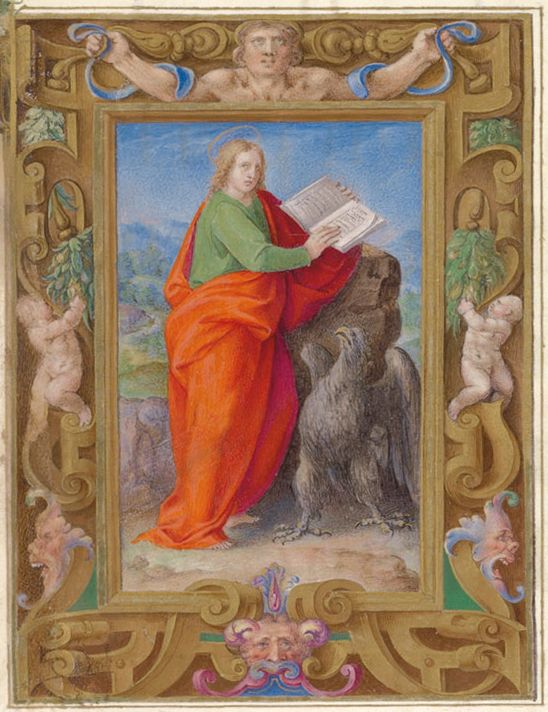
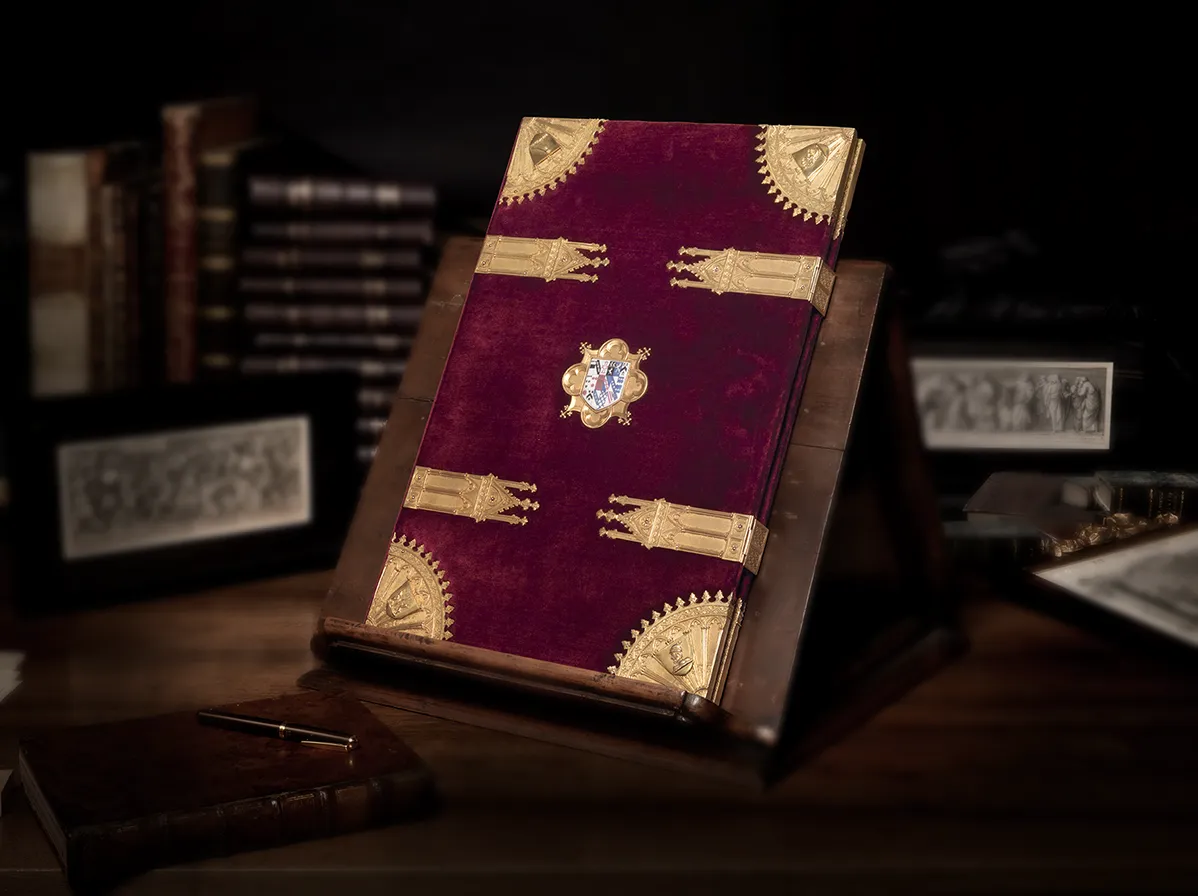
Dopo la morte di Alessandro Farnese, il Lezionario rimase nella Cappella Sistina fino al 1798, quando venne trafugato. Dopo vari passaggi di proprietà – a causa dei quali perse la preziosa legatura originaria – il codice fu acquistato dal collezionista sir John Towneley, che commissionò una nuova legatura in velluto rosso con fibbie e cantonali dorati, impreziosita dallo stemma della famiglia Towneley in porcellana policroma, un autentico capolavoro di artigianato neogotico inglese.
Giulio Clovio, il “piccolo Michelangelo”
“Pictor nulli secundus”, “il Michelangelo della miniatura“, “il piccolo Buonarroti“, sono solo alcune delle espressioni entusiastiche usate nel Cinquecento per definire Giulio Clovio, nato intorno al 1498 nell’attuale Croazia e al servizio del cardinale Farnese a partire dal 1540, per il quale realizzò un altro celebre manoscritto, le Ore Farnese.
Giorgio Vasari nelle Vite descrisse Clovio con queste parole: “Non è mai stato, né sarà per aventura in molti secoli, né il più raro né il più eccellente miniatore, o vogliamo dire dipintore di cose piccole, di don Giulio Clovio, poiché ha di gran lunga superato quanti altri mai si sono in questa maniera di pitture esercitati”.
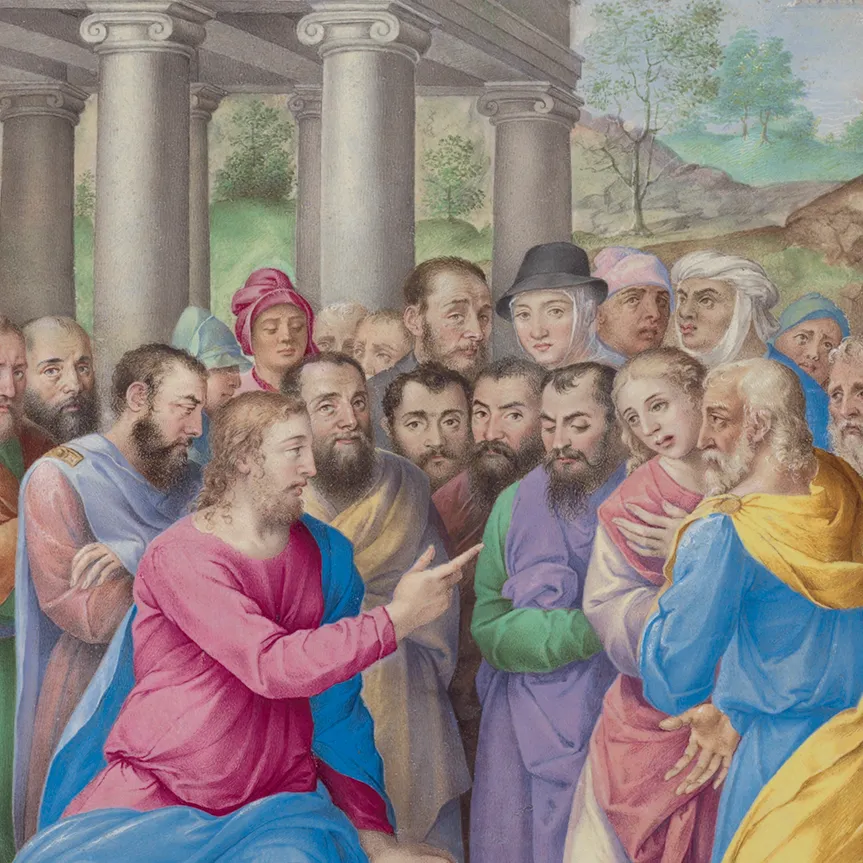
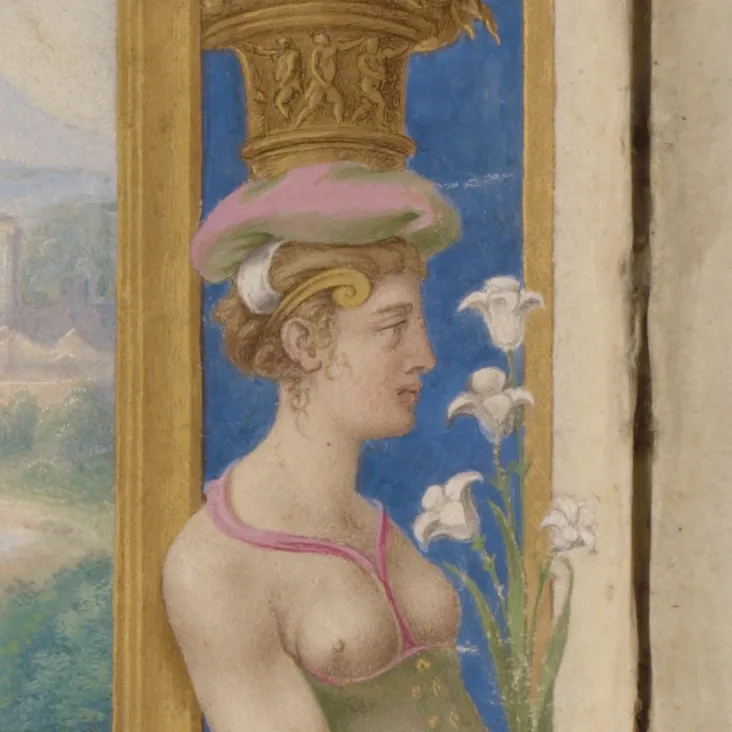
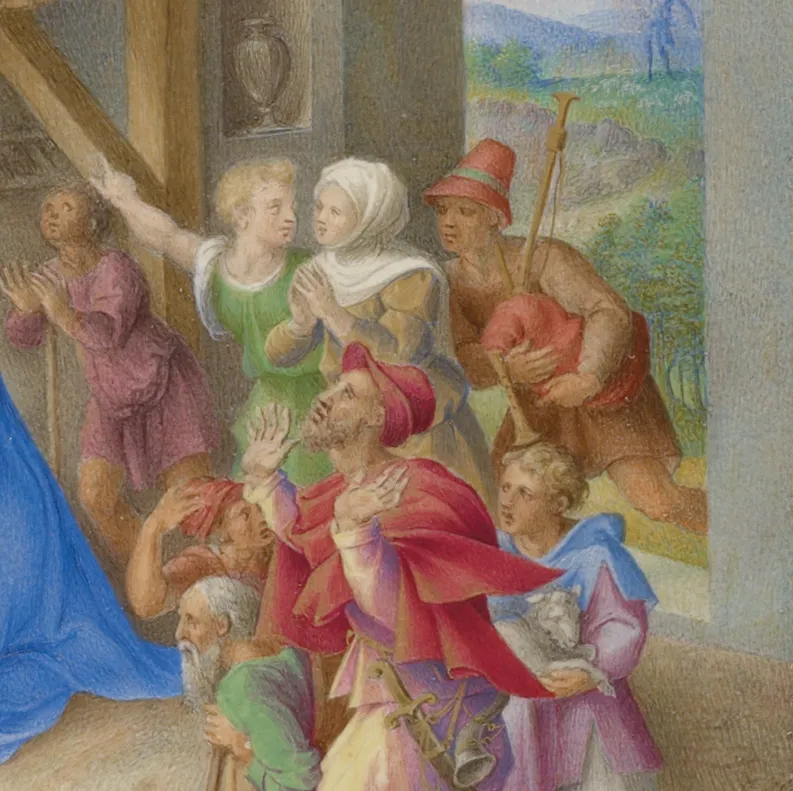
Il committente
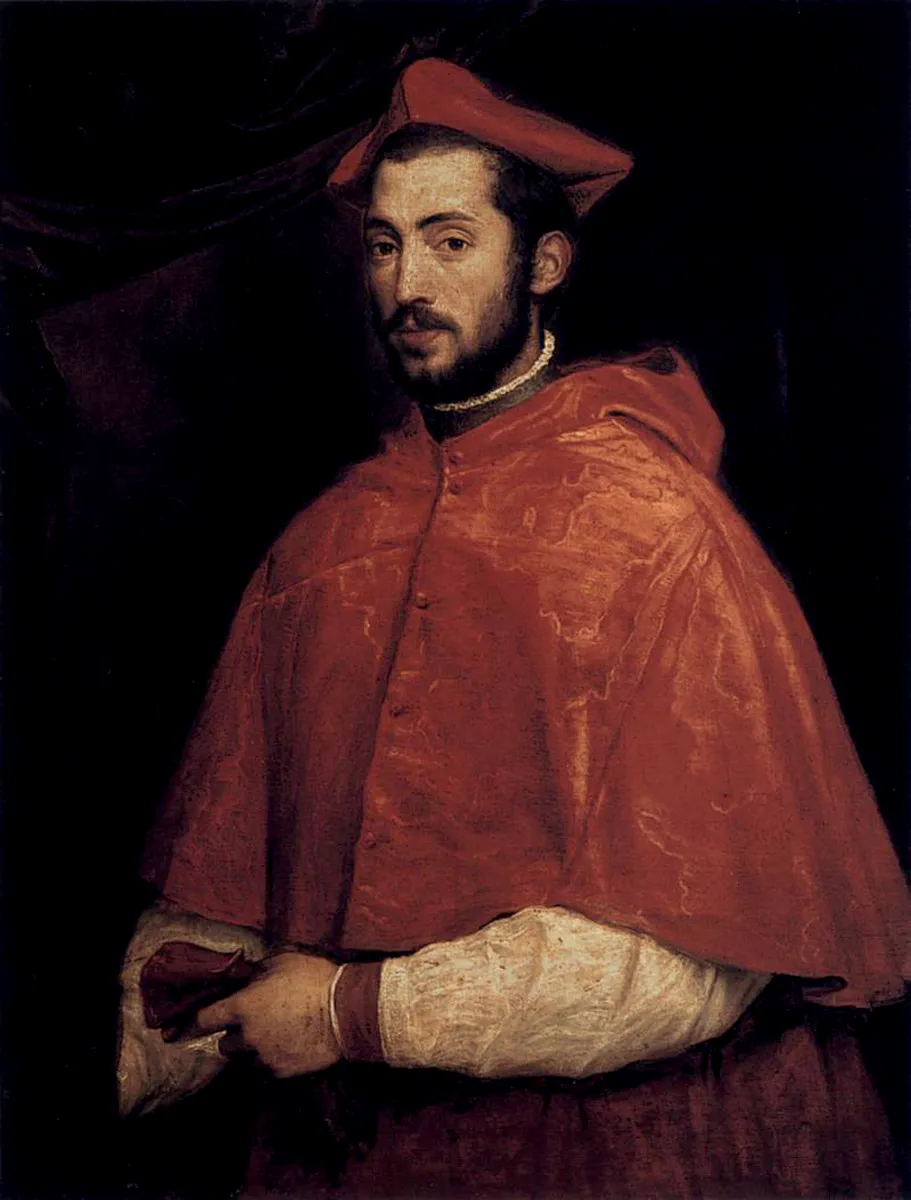
Alessandro Farnese, il Cardinale delle Arti.
Considerato dagli storici il più grande mecenate della Roma cinquecentesca, Alessandro Farnese (1520-1589) fu nominato cardinale all’età di quattordici anni dal nonno Paolo III.
Fin da giovanissimo mostrò grande abilità nel seguire i progetti artistici promossi e finanziati dal Papa. Anche negli affari politici dimostrò ben presto astuzia e carattere, virtù che gli consentirono di mantenere il potere anche dopo la morte del nonno. Dopo una breve permanenza in Francia, nel 1554 fece ritorno a Roma: iniziò allora quella stagione di imprese artistiche straordinarie che gli valse l’appellativo di “Gran Cardinale”.
Si circondò dei maggiori artisti dell’epoca, da Tiziano a Clovio, dal Vignola ad Antonio da Sangallo. Con Giulio Clovio ebbe anche un duraturo rapporto di amicizia, tanto che il miniatore gli lasciò in eredità molte sue opere.
Le cinque meraviglie del Cardinale.
La chiesa madre della Compagnia di Gesù è uno dei massimi monumenti della città di Roma voluta da Alessandro Farnese, frutto del genio del Vignola e di Giacomo della Porta.
Insieme alle Ore Farnese, rappresenta il vertice assoluto della miniatura del Cinquecento. Oggi il codice è custodito presso la New York Public Library.
La residenza voluta da Agostino Chigi e affrescata da Raffaello deve il suo nome ad Alessandro Farnese, che l’acquistò nel 1579.
Definito dai contemporanei “il più bel palazzo del mondo”, fu iniziato da Antonio da Sangallo e ultimato dal Vignola. Dopo esservi stato, Carlo Borromeo esclamò: “Ma allora come sarà il Paradiso?”.
Di questi mirabili giardini progettati dal Vignola sul colle Palatino di Roma, oggi rimane ben poco. All’epoca erano una delle meraviglie della città.
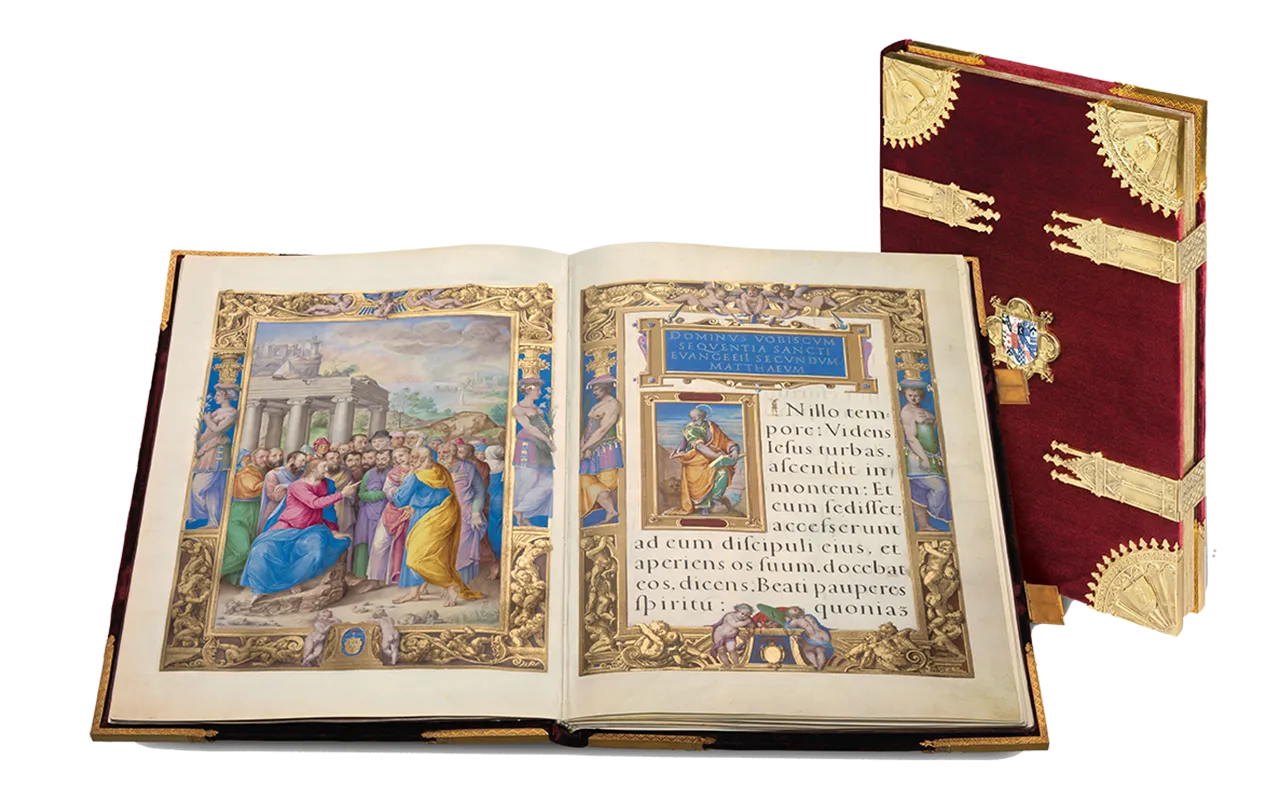
Caratteristiche dell’opera.
- Tiratura limitata di 550 esemplari numerati per la diffusione mondiale
- 64 pagine, di cui 12 interamente illustrate, di formato 33 x 48,7 cm
- Riproduzione facsimilare delle diverse dorature presenti nel manoscritto
- Fustellatura a pagina singola
- Legatura realizzata interamente a mano: coperta in velluto rosso di seta pura; cantonali, bindelle e medaglioni dorati in oro zecchino; stemma della famiglia Towneley in porcellana policroma su entrambi i piatti
- Commentario al codice a cura di Jonathan J. G. Alexander
La biblioteca impossibile.
Il Lezionario Farnese fa parte della collana “La Biblioteca Impossibile”, la più autorevole e preziosa collezione di facsimili dedicata al Rinascimento. Un progetto unico per completezza e rigore scientifico inaugurato nel 1995 dalla Bibbia di Borso d’Este e proseguito, anno dopo anno, con la riproduzione di capolavori assoluti della miniatura: dalla monumentale Bibbia di Federico da Montefeltro al piccolo Libro d’Ore Torriani, dal sontuoso Dante Urbinate alle celeberrime Très Riches Heures del Duca di Berry.
Contattaci.
Questo titolo non è più disponibile. Per richiedere ulteriori informazioni o se interessati all’acquisto dei titoli della Biblioteca Impossibile ancora disponibili, vi invitiamo a contattarci tramite il modulo sottostante.
